This place is huge! And you won’t have any crowds to deal with, even in the highest of the high season. Personally I have found this to be my favourite gallery in Europe in terms of overall experience, of the range of artists and the quiet and spaciousness of the gallery context. The Uffizi Gallery in Florence is great, but it isn’t so enjoyable to visit if you are being jostled by a crowd of thousands.
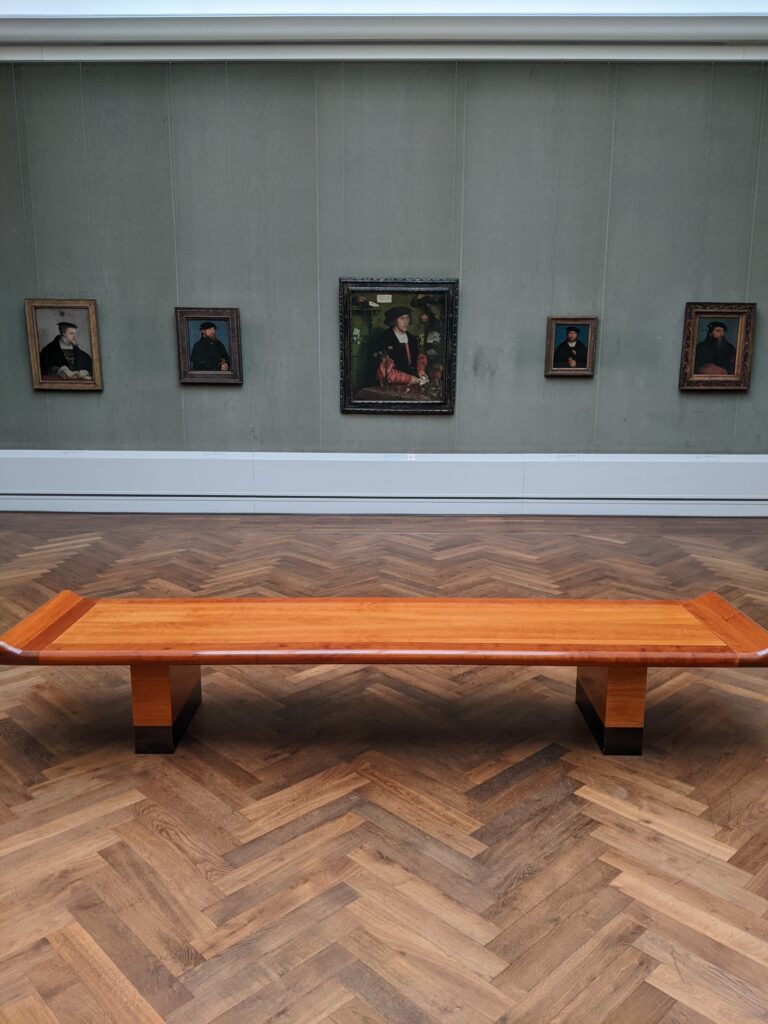
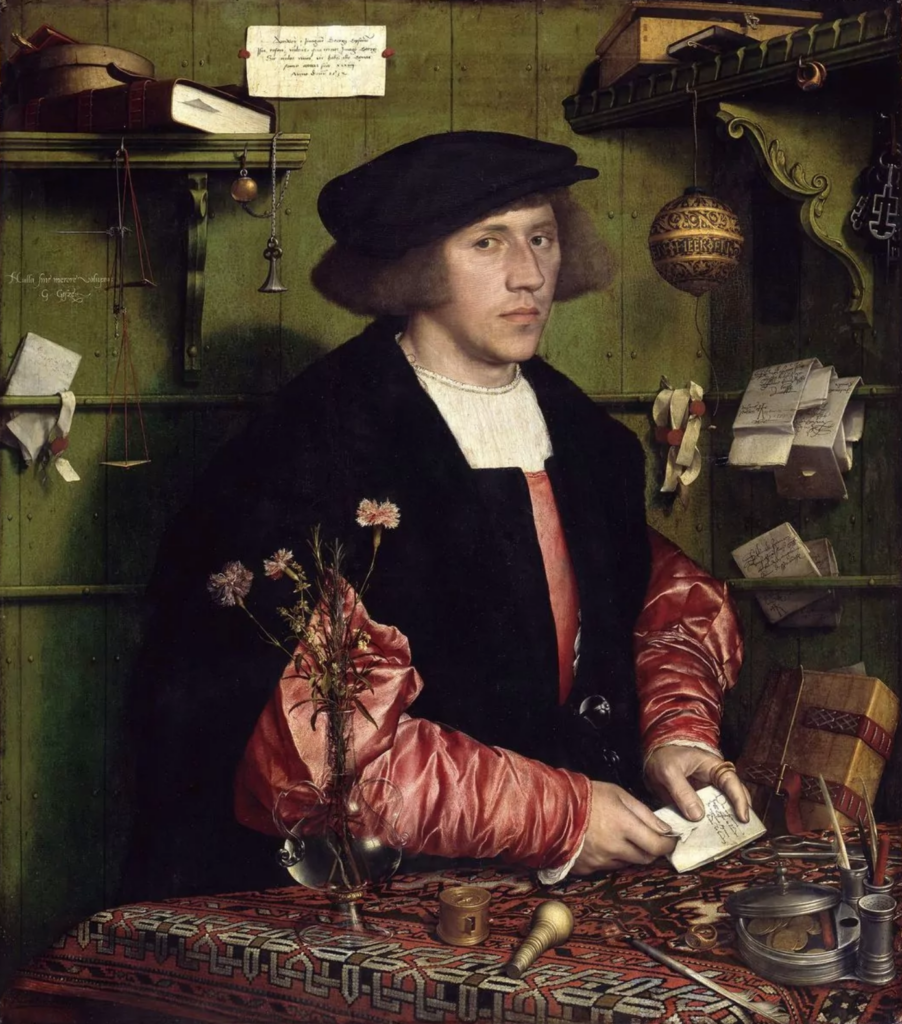
J., ‘The merchant Georg Gisze’, 1532.
The Birth of Bourgeois Man. From around 500 years ago in north-west Europe, in places like this and people like Holbein’s merchant, we get a gradual shift in psychology. Institutions like stock markets, banks, market towns, and universities affect Western psychology and that that psychology becomes more about acquisitions, hard work, deferring gratifications, bending over the desk and focussing on personal enrichment. The eyes of the individual become dull and joyless. In this painting by Holbein we have a perfect representation of this new kind of man. The middle class striver, and pen pusher. Money lays on the desk, keys hang in the top right – make the money, buy the stuff, lock it up. Keep good records. The slender poesie of flowers has but a moment before it will wilt. Our living moments are passing and fading away as we focus on the jingling coin. There are so many details in this painting that you can focus on when you see the large original canvas, for example the Turkish rug covering his table makes me think of global trade flows.
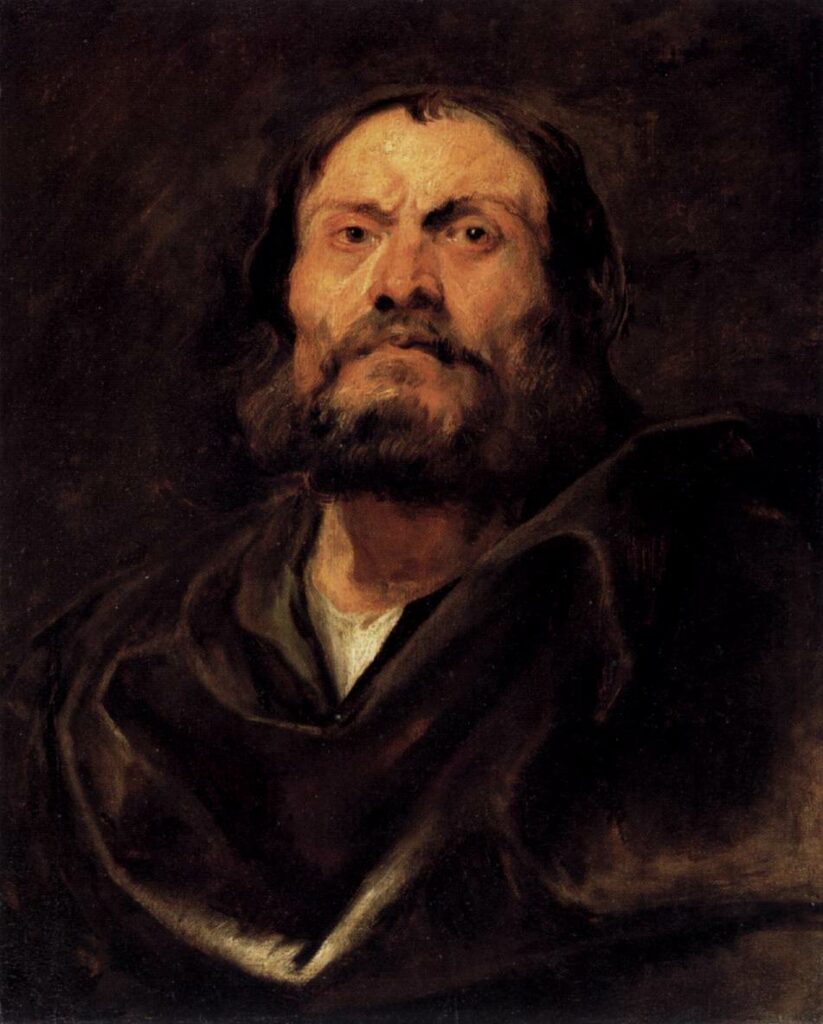
The fire burns in this man, and his eyes tell you that. A ruggedly beautiful face from the brush and the imagination of van Dyck. He was court painter for Charles I in England but this is my favourite painting of his and its here in Berlin. He is an apostle for all passion and all certitude of conviction.
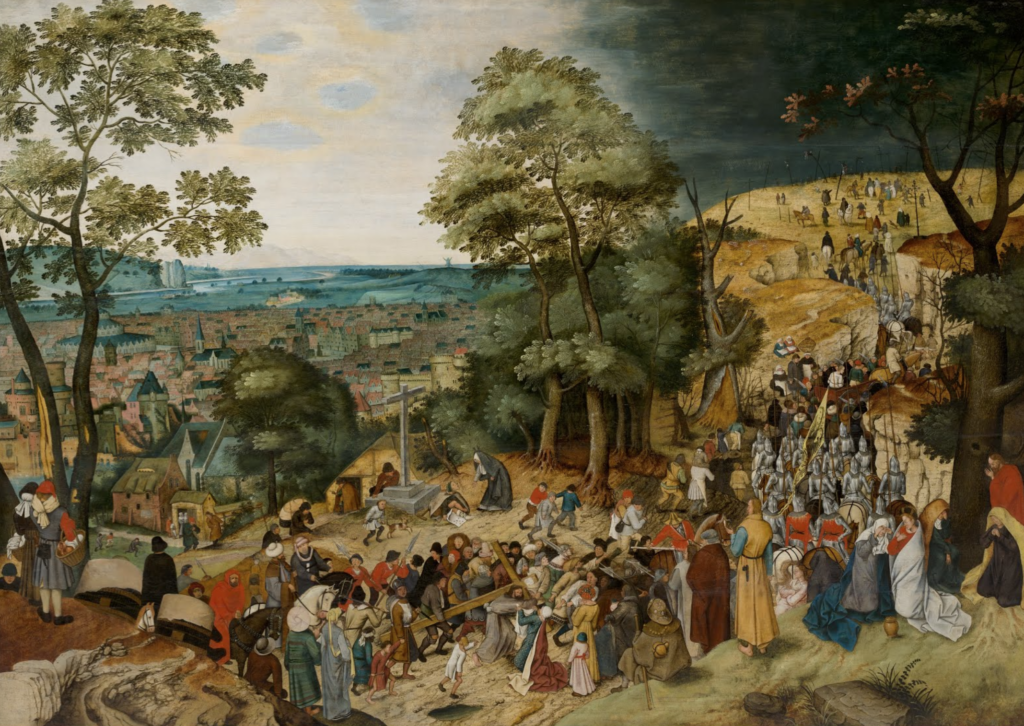
Pieter Brueghel the Younger circa 1605
So much is happening whenever you take the time to look at a large canvas by Brueghel. Here Christ is carrying the cross to the hill of Golgotha where he will be cruxified. It is a central moment in the religious imagination of the Western World. And yet…
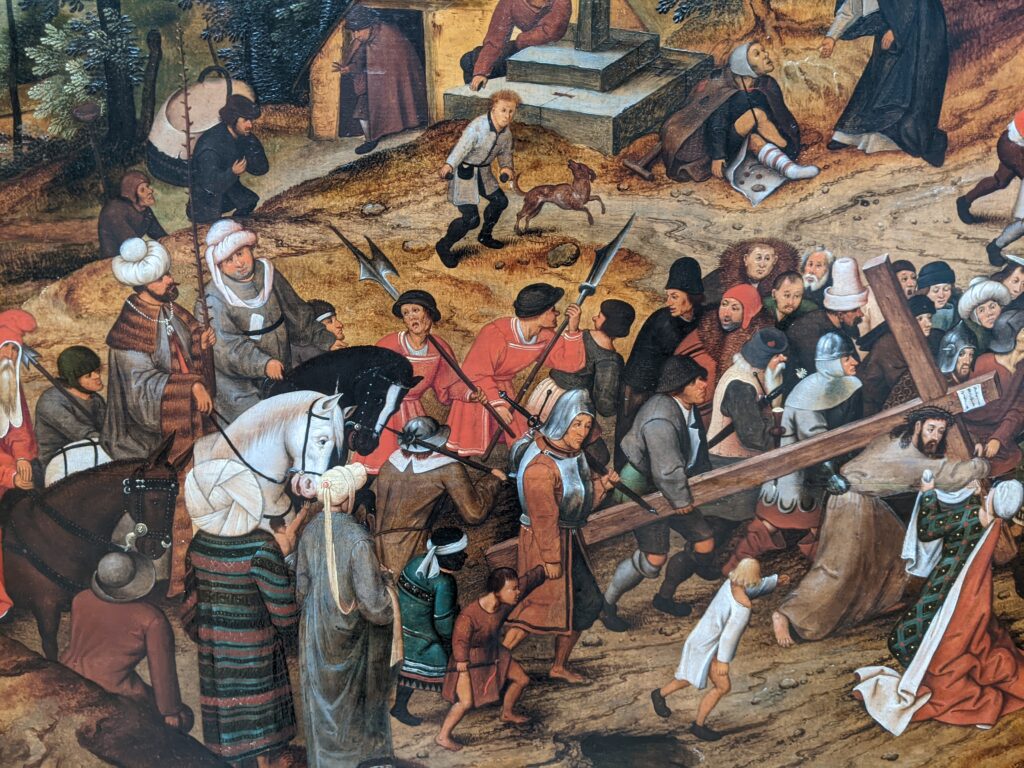
And yet… W. H. Auden was right in his poem about another painting by Brueghel. I will quote a few lines and you’ll see what I mean:
Musee des Beaux Arts
W. H. Auden
About suffering they were never wrong,
The old Masters: how well they understood
Its human position: how it takes place
While someone else is eating or opening a window or just walking dully along;
How, when the aged are reverently, passionately waiting
For the miraculous birth, there always must be
Children who did not specially want it to happen, skating
On a pond at the edge of the wood:
They never forgot
That even the dreadful martyrdom must run its course
Anyhow in a corner, some untidy spot
Where the dogs go on with their doggy life and the torturer’s horse
Scratches its innocent behind on a tree.
Now look at the section of the above painting I’ve included. Look at the two men on horse back having a quiet chat on the way up the hill, and seemingly not galvanised by the magnitude of the moment and its cosmic significance. As Auden says, suffering takes place ‘while someone is eating or opening a window or just walking dully along’. In other words, part of emotional maturity in life is recognising that you or your preoccupation are not centre of the universe. You are not the protagonist in the mind of another person, as you are in your own. Perhaps not even Christ is, sometimes.
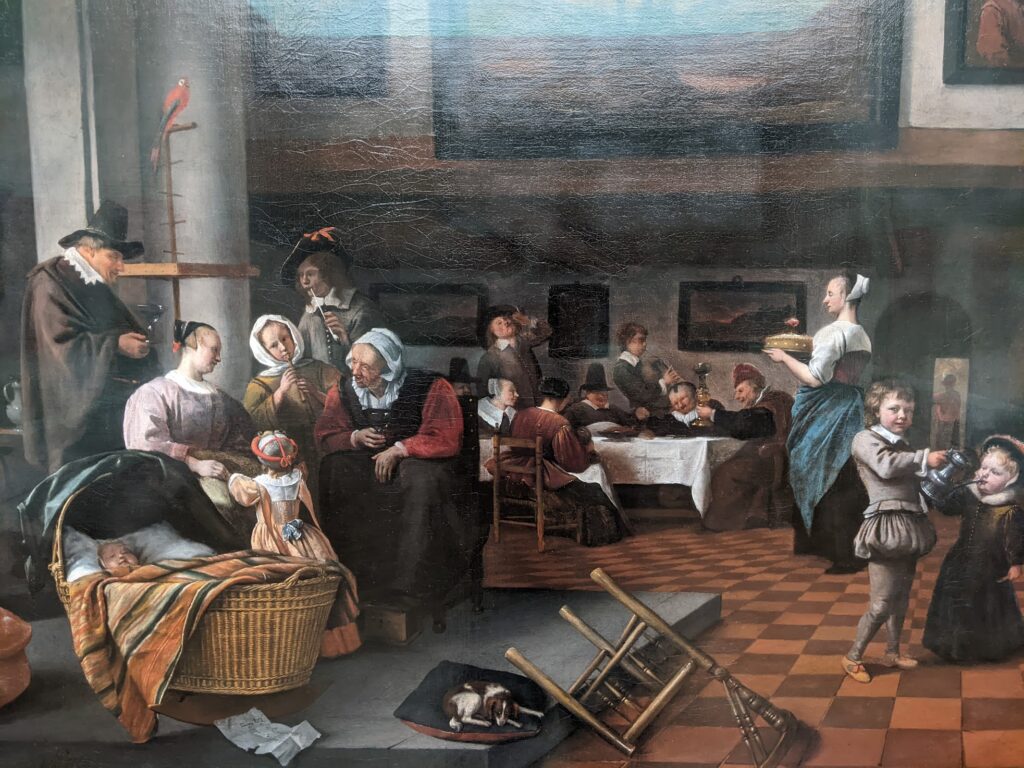
This next painting by Jan Steen is a festival of bad behaviour. Boozing, and smoking, and gorging on cake. It was only in the 1500s that highly refined sugar got to Europe in large quantities. As the middle class grew in the 1600s in the Netherlands and north-west Europe more people could have sedentary professions and in combination with lots of alcohol, smoking, and refined sugar, we get more of the mismatch diseases endemic to the modern West. The arteries of these men and women, our ancestors in a sense, start to get more clogged, and their blood pressures start to rise. Diseases of affluence, the one’s that modern hospitals labour under the weight of today in the West, started long ago. In this painting by Jan Steen we see a world where they are really getting under way in earnest. The old are still singing this tune, and the young are still piping the refrain.
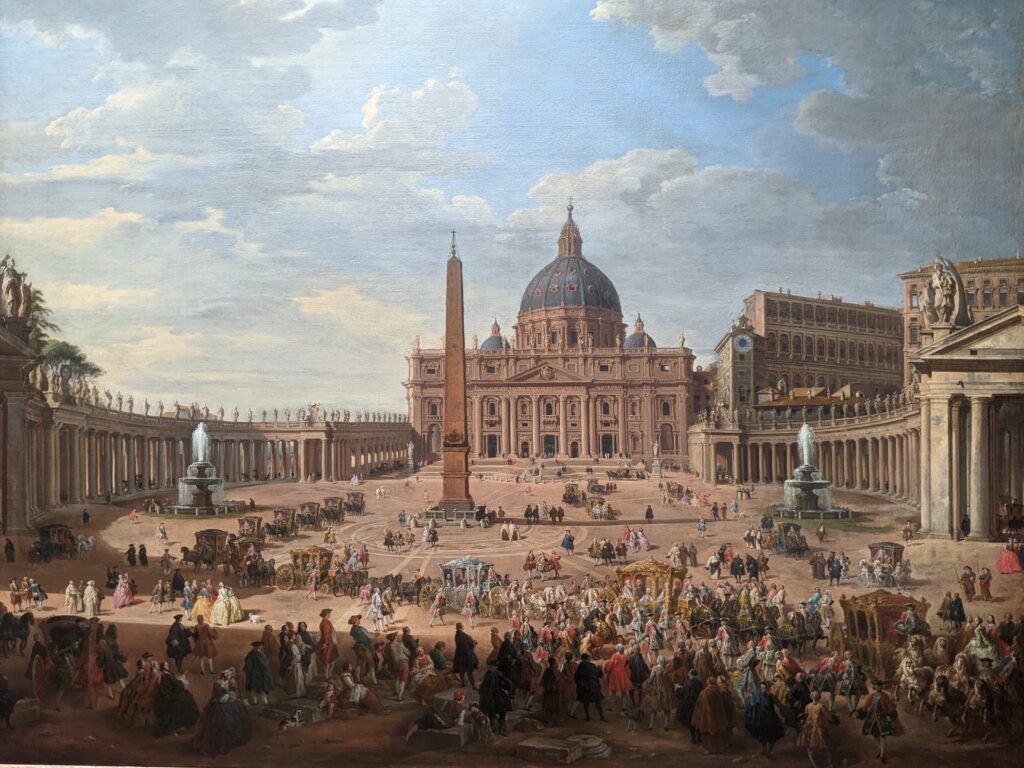
This is a huge canvas, and you stand in front of it and are humbled by its size. The screen can’t communicate that to you. But it is a reminder of how much French and English and German aristocrats loved Rome and its glories. It is a reminder of how much I love the sheer scale and majesty of the piazza in front of St. Peters in Rome. It is one of the great human made spaces in the world, certainly one of the greatest public spaces in Europe. Here the world seems larger and the ceiling of cultural possibilities higher.
And what is another obvious choice for a great public space in Europe? Well just walk on through the Gemäldegalerie and come to the Canalettos…
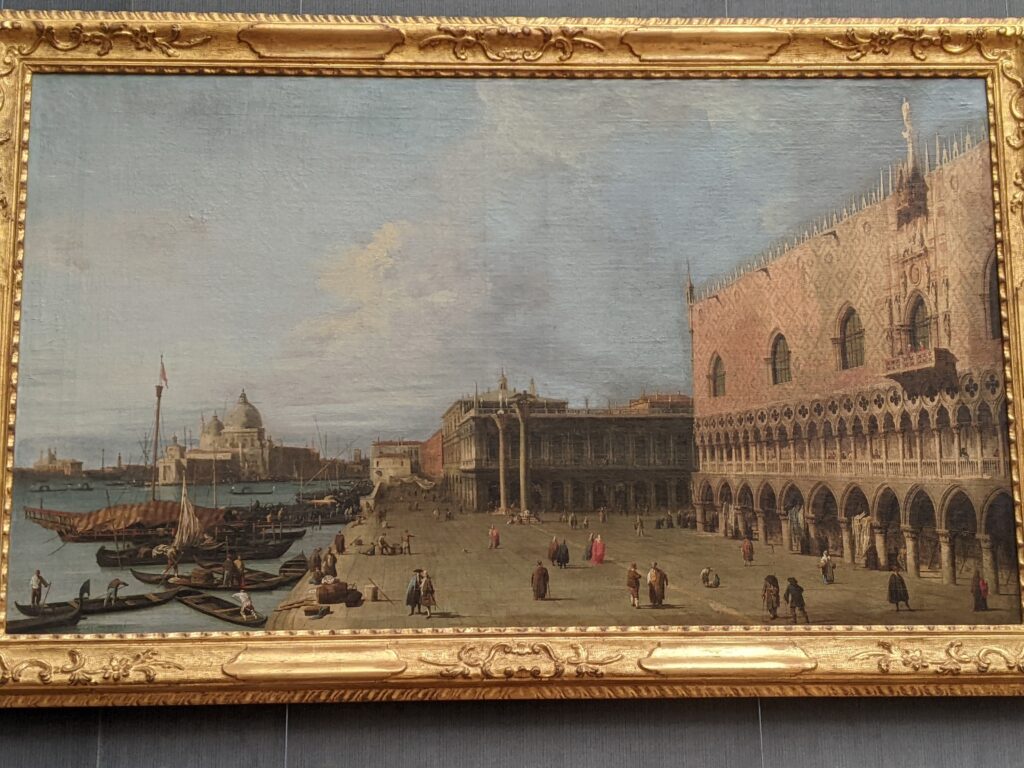
I cast my mind back to the Venice this painter knew, full of mouldering Gothic edifices and shimmering sunsets and pungent odours, and I am nostalgic for a world I have never known. Today Venice is still beautiful and to be treasured, but she is dying under the weight of over tourism. The city has been loved to the point of death in 2023. I got up at 5am one morning last year and stood by a column next to the Ducal Palace and looked out from the molo, and felt for a moment this old European splendour and beauty with hardly a soul around in the weak dawn light.
One thing is certain: if you want to escape the world of over tourism, just visit the Gemäldegalerie, Staatliche Museen zu Berlin. For reasons I don’t understand, this place is wonderfully uncrowded.